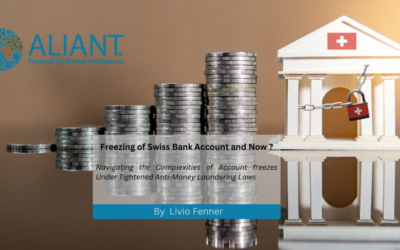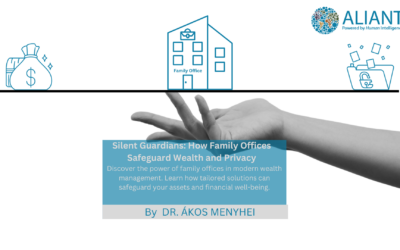Originally published in the Daily Journal | December 6, 2023
Large law firms (at the time defined as four or more lawyers) emerged in the late 19th century to serve the needs of growing businesses that required increasingly specialized legal work. Starting with just a few, the number of these firms grew to over 1,000 by 1925. In the early 1900s, the “Cravath System” was developed, giving law firms their modern shape of a pyramid structure with few partners served by many associates. Today, most law firms continue to use this structure.
The modern-day large law firms emerged in the 1960s, as corporate America found itself as a target of more and more regulation, and for several decades the large firms flourished. Following the M&A boom of the 1980s, the large firms had to contend with the emergence of in-house counsel, alternative service providers, technological advances, and various financial crises.
More recently the legal community has seen the emergence of a new law firm structure.
Starting with FisherBroyles in 2002, then a slow addition of a few more players (like Rimon Law, Potomac Law Group), with an eventual explosion during Covid, the virtual or distributed law firms offer their lawyers a different approach to the practice of law.
The distributed law firms allow their lawyers the flexibility of working from any location, setting their own hours, billing rates and billing requirements, and providing a lean, non-bureaucratic administrative model. These firms provide support that is similar to the traditional firms, but without some of the perks. By avoiding significant lease and staff salary commitments and unnecessary spending on various perks, each lawyer’s profit margin is significantly increased.
The adoption of the distributed model was slow, but the acceptance of the remote working model helped. Some of the distributed firms now number hundreds of lawyers, many of them former partners at the AmLaw 100 firms.
Distributed law firms provide the same services to each of their lawyers, charge the same percentage of collections as overhead (generally somewhere between 15-25%), and allow lawyers to add on individual lease expenses, paralegals, or associates, if so desired. The majority of partners at the distributed firms work from home or use office sharing arrangements and share paralegals on a per diem basis.
A 2023 survey by the Wells Fargo Legal Specialty Group reported a 10% drop in productivity (hours billed) among the highest grossing U.S. law firms and attributed the drop to lower demand for legal services. Although demand and productivity dropped, hiring and revenues had each increased by about 4%. The increase in revenue is attributed to increased billing rates.
Overcoming a drop in demand with higher billing rates is a stop-gap measure. Clients are not as loyal to firms as they once were and will seek firms that can provide a similar level of service at a lower billing rate and bill fewer hours. Selling clients on higher billing rates, competing within a larger labor pool, and having fewer hours to bill are stressful for the law firm partners and present a significant talent retention challenge for any law firm leader. Will this additional stress drive more partners from Big Law to the distributed model?
Many Big Law partners are used to being taken care of and are comfortable with having a large credible brand on their business card. But what else do the big traditional firms offer these partners? What makes them stay, other than inertia or fear of change? More and more partners find that their practice no longer requires them to be at a large firm, and they can just as well service their clients as solo practitioners, at much smaller firms, or at the new distributed firms that provide the necessary support, complete practice independence and close to 2-3X take-home compensation (compared to the traditional firms).
Partners leaving big law firms and looking to go solo or start a small firm may not have the time to start their own practice. Running a solo or a small firm is like running a startup: keeping books, getting paid, developing business, marketing, hiring staff, remaining knowledgeable and competitive, accessing state of the art technologies, purchasing insurance, and so much more. Most solo and small firm lawyers spend 30-40% of their time on activities that do not generate revenue.
Joining a distributed law firm will allow these partners to operate much like a solo practitioner but with full firm support, a credible brand, a stable operating platform and a significant boost in take-home pay. The distributed law firm model has become an easy way to shift from Big Law to a solo-like environment.
Even distributed firms are undergoing an evolution. Some (like Aliant, a global distributed law firm) are starting to treat the lawyers as if they are the firm’s clients. In addition to the original model – comprehensive support of a traditional law firm with the flexibility, independence and higher profit margin of a distributed firm – they offer bespoke service selection, robust business development and sales support. It is a unique approach of treating the practice of law as a business and the law firm partner as the client of that business. With that mindset lawyer-as-customer service comes first, and lawyers are happy.
Many distributed law firms have witnessed a substantial leap in their business not only nationally but globally, as lawyers seek ways to keep their clients, bill less and make more. It is not yet clear whether the AmLaw 100 firms see the distributed model as a threat to their existence, but the writing is on the wall. By being able to offer lawyers credibility, depth of practice, independence and profitability, the distributed model may eventually replace many of the Cravath System firms.
For more information on joining Aliant contact Managing Partner, Jacob Stein at (818) 933-3838 or via e-mail jacobstein@aliantlaw.com
FOLLOW US ON LINKEDIN
SEE MORE OF ALIANT BLOGS HERE.




